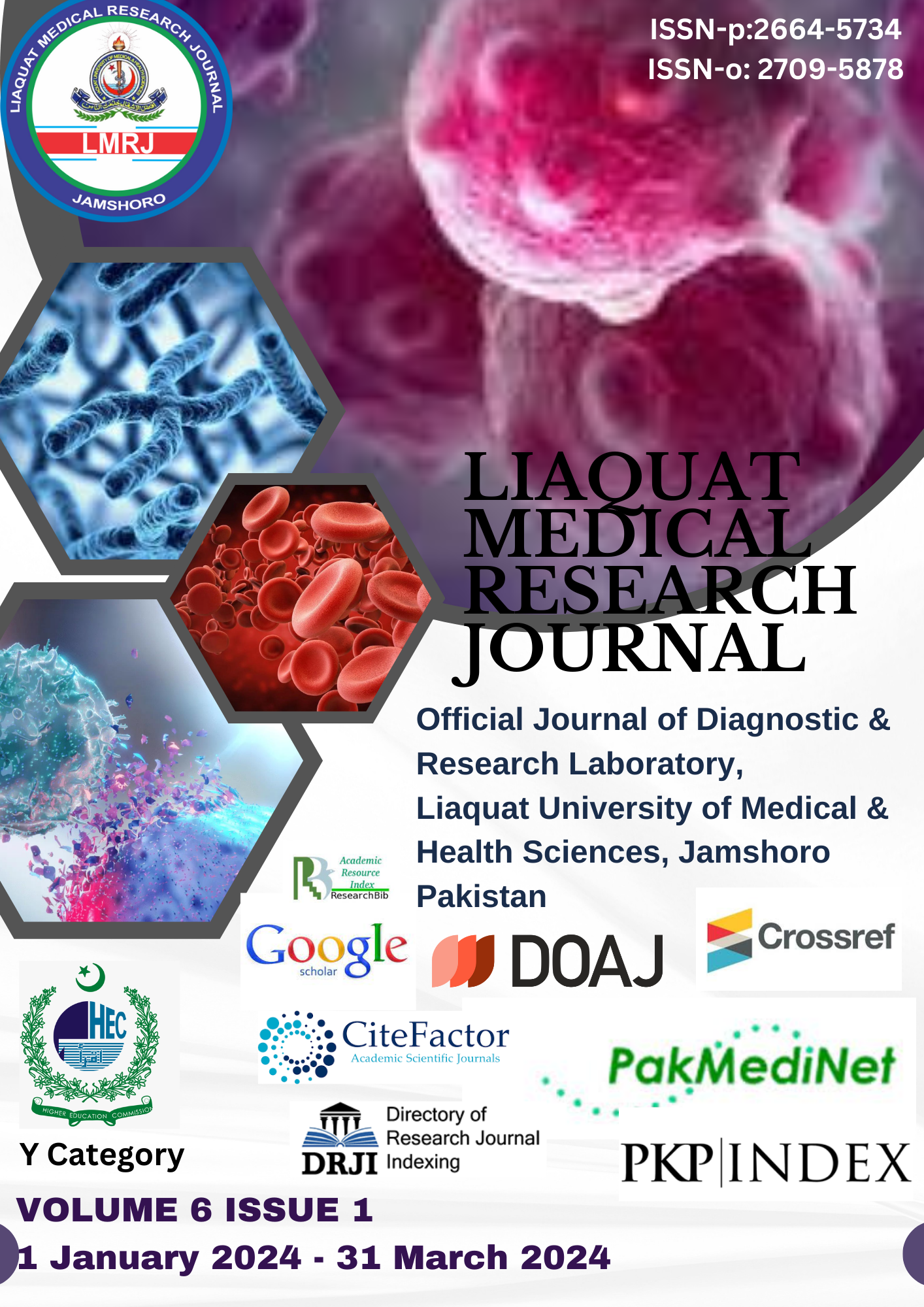Antioxidant and phytochemical analysis of different date palm (Phoenix dactylifera l.) Seed varieties: An in vitro assessment
DOI:
https://doi.org/10.38106/LMRJ.2024.6.1-04Keywords:
Date palm, Phytochemicals, Phenolic content, Antioxidant, FlavonoidsAbstract
The date palm (Phoenix dactylifera L.) fruit contains variety of bioactive constituents including phenolic compounds. This research aimed to analyze the phenolic constituents and antioxidant potential of crude methanol extract samples from seeds of different date varieties, Aseel (As), Ambar (Am), Ajwa Saudi (AJS), Ajwa Khairpur (AJK), Khipro (KP) and Karblyan (KB). Date seeds are regarded as waste product. However, it contains secondary chemicals of biomedical significance. Colorimetric methods were used for the evaluation of phytochemical and antioxidant capacity. The Folin-Ciocalteu method was used for the assessment of phenolic content. The antioxidant potential was evaluated through phosphomolybdenum test, potassium ferricyanide test, and 2,2-diphenyl-1-picryl-hydrazyl-hydrate scavenging test methods. All samples differ significantly in terms of antioxidant activities and quantity of secondary metabolites (phenolic and flavonoid contents). When all samples were compared, As was shown to have the highest amount of phenolic and flavonoids, while AJ(S) had the lowest content. The KP sample had the highest overall antioxidant and reducing potential, while the AJ(K) and Am samples showed the lowest, respectively. Significant DPPH scavenging capacity has been demonstrated in all samples. In order to extend the shelf life of food products, date seeds may consequently provide ideal material for the bio-functional food industry.

Downloads
Published
How to Cite
Issue
Section
Categories
License
Copyright (c) 2024 Asma Nawaz, Rizwana Tania, Shakeel Ahmed, Sadia Qamar Arain, Abdul Majid, Ameer Ahmed Mirbahar , Abdul-Rehman Phull

This work is licensed under a Creative Commons Attribution-NonCommercial-NoDerivatives 4.0 International License.
Copyright: Open access journal copyright lies with authors and protected under CC BY-NC-ND 4.0 licence (https://creativecommons.org/licenses/by-nc-nd/4.0/).









